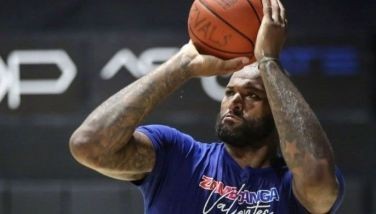Why Physical Therapists are not masseurs
CEBU, Philippines - Since college, when my friends learned that I was taking physical therapy they would ask me for a massage. I would simply joke about it and just dismiss it knowing that they are not that aware as to what our profession is about.
Late last year, the profession was slapped hard when ABS-CBN reporter Jasmin Romero insinuated in her story that physical therapy is merely a more expensive version of massage therapy, a certificate course.
And to think that physical therapy has been in the country since the late '40s. Romero's ignorance shows that even respected members of the community, including the medical community, still don't know the importance of physical therapy in health care.
Clearly, the Philippine Physical Therapy Association failed its mandate in advancing and raising awareness on the profession.
There is, of course, nothing wrong with being a masseur, but they are and will never equate to physical therapy. A masseur could not make an inutile walk or train an athlete to go beyond his optimum. It takes more than massage to do that.
A physical therapist's knowledge of the disease process and injury has given them the ability to diagnose and recommend treatment in terms of disabilities and impairments. They are almost doctors, so to speak, but of course, they lack the extensive and specialized training of physicians, as such, are bound to limitations.
As much as a physical therapist can diagnose a physical impairment, he cannot legally diagnose a disease, which would require a series of diagnostic procedure including laboratory tests.
With physical therapy, the main goal is to restore the patient's function to at least the same level prior to his illness or injury. This is achieved through the use of physical modalities like exercise, heat and cold, manual therapy (where massage would come in), electrical stimulation, and several other modalities including water, light (laser), and magnets.
Allow me to share with you some of the more common modes of treatment used by a physical therapist. Take note that these treatments and the procedures of its use are based on scientific research and not tradition. The goal is to bring the patient to as near normal physical function, like making a paralyzed stroke victim walk again.
Exercise is considered as the king of modalities when it comes to physical therapy. This is the very essence of physical therapy and almost all condition seen by a physical therapist would require one form of exercise or the other, ranging from simple passive movement through the available range to the more complex plyometric exercises. It is through exercise that a stroke patient can recover with no to minimal deficit or for a patient who just underwent heart surgery to achieve near normal endurance state.
Manual therapy is where massage is used as a modality. Aside from massage, a physical therapist also performs spinal and joint mobilization and manipulation, myofascial release, and such other treatment approach that would require skilled hands-on technique. The goal of manual therapy is to promote relaxation, alleviate pain, increase range of motion, decrease and eliminate inflammation, facilitate movement, encourage repair of damaged tissues, and improve the patient's over all function, among others.
Heat and cold modality is used in a variety of ways, and usually it is coupled with other modalities like water for hydrotherapy. These are also very common modalities used in physical therapy and include infrared radiation, ultrasound, hot or cold packs, and paraffin wax. The goal in using these modalities is to control inflammation, aid in the healing process of injured tissues, relieve pain, and relax tight and spastic muscles.
Electrical stimulation is the use of electricity to relieve pain, re-educate paralyzed muscles, drive medicines into deeper tissues, especially in wound care, and for other purposes. There are a variety of devices used for a specific purpose. Transcutaneous electrical nerve stimulation (TENS) device is one such contraption commonly used in relieving pain.
These modalities may seem to be simple, but when applied wrong they could do more harm to the patient than good. Exercise, for example, is not just about sweat, but there is a scientific approach to exercise depending on the patient's condition - which means the disease process and the impairments it caused.
As the profession continues to progress, more treatment protocols are being introduced all with the goal of helping the patient become a productive part of the community and less of a burden to themselves and their family.
Massage therapy, although a noble profession is not similar in any way to physical therapy. The view of many Filipinos that physical therapists are masseurs reflect the continued lack of appreciation of physical therapy as an integral part in the rehabilitation of a patient. Even among health professionals, there is a dire need to educate them on the capabilities and abilities of physical therapists.
In the Philippines, masseurs earn more, the reason why many physical therapists are leaving the country preferring to work in other countries where they could earn an average of P15,000 a day.
Compare that here in the Philippines where majority of our licensed physical therapists are relegated to work as masseurs in spas and wellness centers or as fitness instructors in gyms. Some are even made to take jobs that are totally unrelated to the profession. Those who stick with the profession end up as volunteers, earning almost nothing, except for the occasional opportunity when the clinic would give them a patient for home visits.
It is the hope of every physical therapist in the country that someday Filipinos would recognize their contribution in addressing a patient's impairments and disability, how he gives the patient the chance to continue to be a productive part of society, and that the services they render be properly compensated.
- Latest
- Trending



















